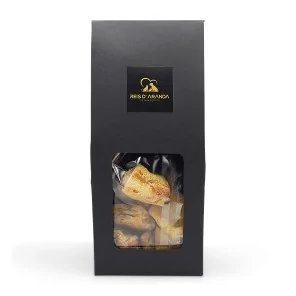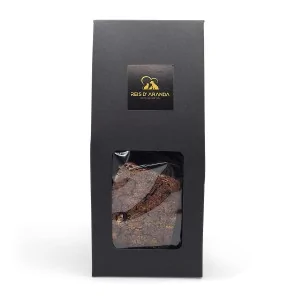The Tornjak originated from genetically homogeneous, almost extinct, indigenous shepherd dogs. These dogs have...
THE TOSA INU
INTRODUCTION
The Tosa (土佐), formally Tosa inu (土佐犬), literally ‘Tosa dog’, is a breed of dog originating from the former Tosa province, now Kōchi prefecture, Japan. A Molosser with an imposing appearance, it is one of the favourite breeds of large dog lovers around the world.
THE ORIGIN OF THE TOSA INU
The tosa developed as a breed in Japan during the second half of the 19th century. As mentioned at the beginning, it takes its name from the province of the same name, Tosa, situated on the island of Shikoku, one of the four main islands of the Japanese archipelago.
The breed used as the basis for the creation of the Tosa was the Shikoku Inu, a strong and beautiful native dog similar in appearance to the well-known Shiba Inu, but larger in size.
The shikoku was crossed with Western breeds such as the bull terrier, Great Dane, St. Bernard and English Mastiff, among others. Because of this mixture of breeds, the tosa is sometimes called the Japanese dogo.
The aim was to create a breed that was particularly suitable for dog fighting, a practice that was widespread in Japan and still exists (on a much smaller scale and clandestinely) today.
The tosa was, as we say, the result of this breeding programme. However, despite this sad origin, it is important to note that the aim was not to create an aggressive dog - the tosa is not aggressive - but only strong and hardy.
Today the tosa, which received official recognition from the Fédération Cynologique Internationale Canine (FCI) in 1964, is a popular family dog and can also often be seen as a guard dog.
WHAT IS THE TOSA INU LIKE?
GENERAL APPEARANCE: He is a large dog, possessing a majestic air and a robust build. He has pendant ears, short hair, square muzzle and tail hanging down and thick at the base.
CRANIAL REGION:
SKULL: Broad.
STOP: Somewhat abrupt.
FACIAL REGION:
NOSE: Large and black.
NOSE: Moderately long. The bridge of the nose is straight.
JAWS: Both jaws strong.
TEETH: Strong; the articulation is scissor-like.
EYES: Rather small, dark brown in colour with a noble expression.
EARS: Relatively small and somewhat thin, set high on both sides of the skull, close fitting to the cheeks.
NECK: Muscled, with dewlap.
BODY:
CROSS: High. Back: Horizontal and straight.
LOIN: Broad and muscular.
Croup: Slightly arched at the top.
CHEST: Broad and deep; ribs moderately set.
BELLY: Well sprung.
TAIL: Thick at the base and tapering gradually to the tip, reaching the hock when set on end.
LIMBS
FOREQUARTERS:
Shoulders: Moderately sloping.
FOREARMS: Straight, strong and not too long.
HINDQUARTERS: Slightly sloping and robust.
HANDS: Well compact. Pads are thick and elastic. The nails are hard and preferably dark in colour.
HINDQUARTERS: The muscles are very well developed. The stifle and hock are strong and somewhat angulated.
FEET: Well compact. The pads are thick and elastic. The nails are hard and preferably dark in colour.
GAIT / MOVEMENT: Strong and vigorous.
COAT :
HAIR: Short, hard and dense.
COLOUR: Red, fawn, albericoque, black and brindle. Slight white markings on chest and feet are permitted.
SIZE: The minimum height at withers for males is 60 cm and 55 cm for bitches.
FAULTS: Any departure from the foregoing points should be considered a fault and the seriousness with which the fault should be regarded should be in exact proportion to its degree and its effect upon the health and welfare of the dog.
- Thin bones.
- Pointed muzzle.
- Slightly overshot or undershot mouth.
DISQUALIFYING FAULTS:
- Aggressiveness or extreme shyness.
- Any dog showing clear signs of physical or behavioural abnormalities.
- Aggressive or fearful dog.
- Severe overshot or undershot mouth.
N.B.:
- Male dogs should have two apparently normal appearing testicles fully descended into the scrotum.
- Only functionally and clinically healthy dogs of typical breed conformation should be used for breeding.
THE HEALTH OF THE TOSA INU
Tosa are generally healthy dogs, although, of course, it all depends on the breeding centre from which the individual dog originates. Some tosa may be predisposed to hip or elbow dysplasia.
THE PERSONALITY OF THE TOSA INU
The most characteristic traits of the tosa's temperament are loyalty, nobility, courage and serenity. They are dogs of great physical strength, but, again, in no case aggressive, quite the contrary. They do not tend to vocalise excessively either.
Tosa dogs relate very well to children in particular, whom they usually adore and with whom they show boundless patience.
Even so, play between a child and a tosa should always be supervised by an adult because, due to its strength and size, the dog could unintentionally hurt its human friend simply by running or jumping.
With proper socialisation, tosa dogs can also interact positively with other dogs. However, caution should be exercised with dogs that are particularly reactive, as tosa are vigilant and are always ready to defend their own in the face of any threat.
Because of their combination of physical strength and character, tosa dogs are, in short, best suited to owners who already have some previous experience in dog training and education.
CONCLUSION
Tosa are undoubtedly intelligent dogs, but it should be noted that they can also be somewhat stubborn and dominant. It is therefore important to practise obedience exercises regularly and to provide them with adequate mental stimulation, always with a positive approach and a firm and confident attitude. The tosa should know clearly what it can and cannot do.
Leave a comment
Log in to post comments
















